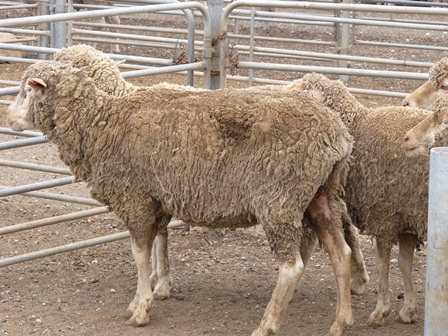It may take 4 to 6 months from shearing for lice to be detected on lightly infested sheep. So producers with early spring shorn sheep should be monitoring closely the status of flocks in order to detect any infestation.
If lice are found then a decision must be made whether to apply a long wool treatment, wait until shearing or shear early. The decision should be made on an economic basis and will depend on various factors including: the level of infestation, the prevalence across your flock and the time until the next scheduled shearing.
The Long Wool Tool in LiceBoss can help you to decide whether it makes better economic sense to muster the sheep and apply a treatment, or to wait and treat the sheep after they are next shorn. Early shearing is generally not the most cost effective choice, but can be considered if the early shearing time is convenient and it is essential to eradicate lice immediately rather than wait until the usual shearing time.

Sheep infested with lice
Beware of the chemical withholding period on some long wool products as the time length can make their use prohibitive too close to shearing.
Don’t fight alone. Sheep lice have been a long time issue. Individual producers may eradicate the problem however if neighbours don’t, chances are the problem will return. Sheep lice are a community issue; work with your neighbours, stock agents, transport operators and ram suppliers. District lice action groups are showing that a little collaboration and diligence can alleviate the problem.
Producers interested in finding out more about setting up a lice action group should contact your local sheep adviser (private consultant or PIRSA).
Summer/autumn shearers should be planning post shearing treatment strategy, particularly if lice are evident now.
Plunge dipping is the best application method for eradication of sheep lice because it ensures total saturation of the fleece when done correctly. Some key factors for effective plunge dipping include:
If plunge dipping is not possible then a backline treatment is recommended. But it is essential that every sheep is treated effectively for eradication to occur and to reduce the development of resistance to the product.
Some essential tips include:
In summary, have a lice eradication plan, seek advice, communicate with your neighbours and work together. Form a local lice action group. Effective treatment of lice will not just happen. You have to make it happen!
Refer to the Liceboss website for more detailed information: www.liceboss.com.au
